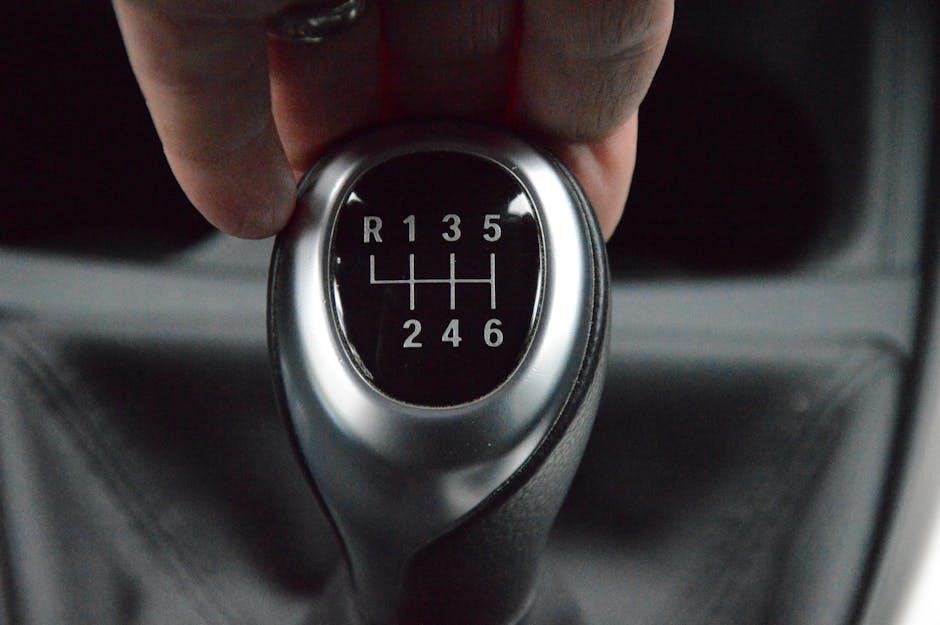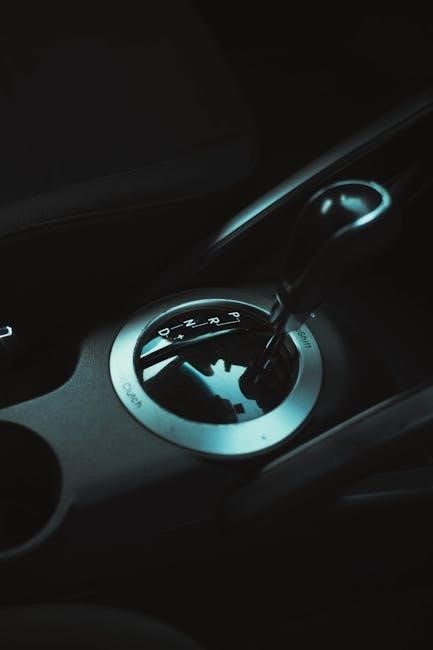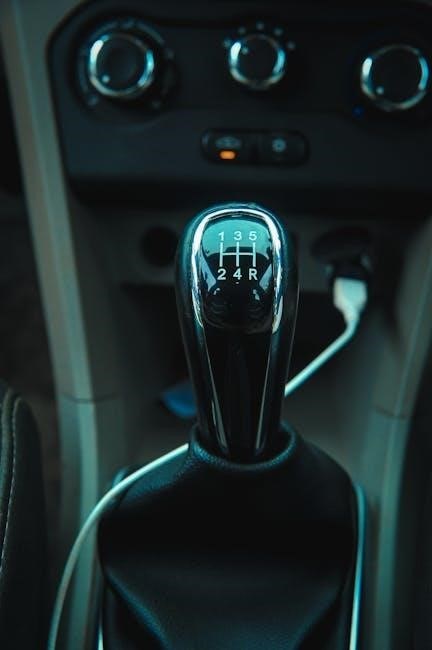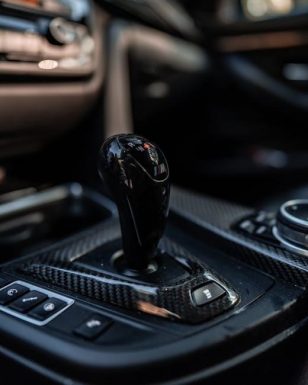The BMW E46 manual transmission swap is a popular conversion among enthusiasts, offering enhanced driving experience, reliability, and performance․ This guide provides a detailed, step-by-step approach to successfully swapping your automatic E46 to a manual transmission, covering essential parts, mechanical processes, and necessary coding for seamless integration․
1․1 Overview of the E46 Model and Its Transmission Options
The BMW E46, produced from 1998 to 2006, is renowned for its balance of performance, handling, and luxury․ Originally available with various transmission options, including automatic and manual, the E46 offers a robust platform for enthusiasts seeking to enhance driving engagement․ For manual swaps, popular choices include the Getrag 250G and ZF GS6-37BZ, known for their durability and performance characteristics․ The E46 M3 featured a sequential manual gearbox (SMG), while other models offered traditional manual transmissions, making the E46 a versatile candidate for transmission conversions․
1․2 Benefits of Converting from Automatic to Manual Transmission
Converting an E46 from automatic to manual transmission offers several advantages, including enhanced driving engagement, improved reliability, and better performance; Manual transmissions provide a more direct connection to the vehicle, allowing precise control over gear shifts and a sportier driving experience․ Additionally, manuals are often more durable and require less maintenance than automatics, reducing long-term ownership costs․ For enthusiasts, the swap restores the car’s original intent, offering a more immersive and enjoyable driving experience while potentially increasing the vehicle’s value among purists and performance-driven buyers․

Reasons for Performing a Manual Transmission Swap
Enhanced driving experience, improved control, and increased reliability are primary reasons for a manual swap, offering better performance and a more engaging connection to the vehicle․
2․1 Enhanced Driving Experience and Control
A manual transmission swap for the E46 offers a more immersive driving experience, providing direct control over gear shifts and throttle response․ Drivers can enjoy precise acceleration and a sportier feel, enhancing engagement behind the wheel․ This conversion restores the car’s original driving dynamics, especially for models initially equipped with automatic transmissions․ Many enthusiasts find that manual transmissions foster a deeper connection to the vehicle, making every drive more enjoyable and rewarding․
2․2 Improved Reliability and Longevity
Converting to a manual transmission in the E46 often results in improved reliability and longevity․ Manual transmissions typically have fewer complex components compared to automatics, reducing the risk of costly repairs over time․ This swap is particularly beneficial for older E46 models, as manual transmissions are known for their durability and simplicity․ Additionally, manual transmissions often require less maintenance, making them a practical choice for long-term ownership․ This reliability makes the manual swap a smart investment for enthusiasts seeking a more robust driving experience․
2․3 Performance Improvements and Better Responsiveness
A manual transmission swap in the E46 significantly enhances performance and responsiveness․ By eliminating the torque converter lag found in automatics, drivers experience quicker acceleration and crisper throttle response․ The direct connection of a manual gearbox allows for better control during shifting, making the car feel more agile and sporty․ This improvement is particularly noticeable in spirited driving, where precise gear control and immediate power delivery make a substantial difference․ The swap transforms the E46 into a more engaging and dynamic driving machine, appealing to enthusiasts seeking maximum performance and driving involvement․

Necessary Parts for the E46 Manual Swap
The E46 manual swap requires a transmission, clutch assembly, flywheel, shifter linkage, and wiring harness․ These components ensure proper mechanical and electrical functionality for a successful conversion․
3․1 Transmission Options: Getrag 250G vs․ ZF GS6-37BZ
Choosing the right transmission is crucial for the E46 manual swap․ The Getrag 250G is a 5-speed option known for reliability and simplicity, fitting earlier models․ The ZF GS6-37BZ, a 6-speed unit, offers closer gear ratios and suits performance-oriented drivers․ Factors like model year, driving style, and desired performance help determine the best choice․ Both transmissions are compatible with the E46 but cater to different preferences and needs, ensuring optimal performance and driving experience․
3․2 Clutch Assembly and Pedal Box
The clutch assembly and pedal box are essential components of the E46 manual swap․ A manual-specific clutch pedal assembly, including master and slave cylinders, is required to operate the clutch system․ The pedal box connects the clutch pedal to the master cylinder, ensuring proper hydraulic pressure․ A manual-specific flywheel and clutch kit must also be installed to work seamlessly with the new transmission․ These components ensure smooth gear engagement and disengagement, providing a responsive driving experience․ Proper installation is critical for optimal functionality and longevity of the system․
3․3 Flywheel, Clutch Kit, and Shifter Linkage
The flywheel, clutch kit, and shifter linkage are vital for the E46 manual swap․ A lightweight or dual-mass flywheel is often chosen for optimal performance․ The clutch kit includes a pressure plate, disc, and release bearing, ensuring smooth and precise gear changes․ The shifter linkage connects the gearshift to the transmission, providing a direct and responsive feel․ Proper alignment and installation of these components are crucial for seamless operation, preventing any mechanical issues during driving․ They work together to enhance the overall driving experience and vehicle performance․
3․4 Manual Transmission Bellhousing
The manual transmission bellhousing is crucial in the E46 swap, housing and protecting the transmission while ensuring precise alignment with the engine․ Compatibility with the E46’s engine and transmission is vital for proper fitment and to prevent mechanical issues․ Correct installation ensures smooth operation and supports the drivetrain effectively․ Improper installation can lead to premature wear or failure․ Using the right bellhousing is essential for optimal performance and reliability, ensuring a successful manual swap․
3․5 Wiring Harness and Electrical Components
The wiring harness and electrical components are critical for integrating the manual transmission into the E46’s systems․ Modifications include removing the automatic transmission control module and adjusting circuits for the clutch switch and reverse light․ Proper wiring ensures the manual transmission functions correctly, with signals for the clutch and shifter․ Custom harnesses or adapters may be needed, and careful testing is essential to prevent electrical issues․ Correcting the wiring ensures smooth operation and prevents error codes, making it a vital step in the swap process for reliability and performance․

Mechanical Swap Process
The mechanical swap involves removing the automatic transmission and installing the manual assembly, including the bellhousing, flywheel, and clutch․ Ensure all components are compatible and properly fitted․
4․1 Removing the Automatic Transmission Components
Removing the automatic transmission components begins with disconnecting the battery and draining fluids․ Carefully detach the driveshaft and exhaust system to access the transmission․ Unbolt the automatic transmission from the engine and lower it using a jack or lift․ Remove the torque converter and shifter assembly․ Disconnect wiring harnesses, including the transmission control module (EGS), and set aside all components for replacement․ This step requires precision to avoid damage to surrounding systems and ensure a smooth transition to the manual setup․
4․2 Installing the Manual Transmission Assembly
Installing the manual transmission assembly begins by aligning the new transmission with the engine mount․ Securely bolt the transmission to the engine, ensuring proper alignment․ Reconnect the driveshaft and shifter linkage, followed by the clutch slave cylinder and flywheel․ Reinstall the clutch pedal assembly and reconnect the wiring harness, including the reverse light and clutch switches․ Double-check all connections for tightness and proper function․ Finally, test the shifter operation to ensure smooth gear engagement before completing the installation․

Electrical and Wiring Modifications
Remove the EGS module, rewire the clutch switch, and connect the reverse light circuit․ Ensure all wiring connections are secure and compatible with the manual setup․
5․1 Removing the Automatic Transmission Control Module (EGS)
Begin by disconnecting the battery to prevent any electrical issues․ Locate the EGS module, typically found in the electronics box near the brake master cylinder․ Gently pull the module out after disconnecting the connector A7000․ Removing the EGS is essential to eliminate automatic transmission functions and prepare the system for manual operation․ This step ensures the car’s computer recognizes the new manual setup, preventing conflicts and enabling proper functionality․ Proper disposal or storage of the EGS is recommended․
5․2 Wiring Changes for the Clutch Switch and Reverse Light
Install the clutch switch to ensure the starter engages only in neutral․ Connect the reverse light switch to the new manual transmission for proper functionality․ Tap into existing wiring circuits, such as the brake pedal switch, for power․ Carefully reroute and secure all connections to avoid electrical interference․ Proper wiring ensures the manual transmission operates seamlessly, with accurate gear selection and reverse light activation․ Use a wiring diagram to avoid errors and confirm all connections are secure before testing the system․
5․3 Ensuring Proper Connections for Manual Transmission Functionality
After installing the manual transmission, ensure all electrical connections are secure and properly routed․ Remove the EGS module and adapt the wiring harness to accommodate the clutch switch and reverse light․ Verify the starter interlock circuit is functional, preventing the engine from starting in gear․ Use a wiring diagram to confirm connections and avoid miswires․ Properly coding the ECU is essential for the system to recognize the manual components․ Test all functions, including reverse lights and clutch engagement, to ensure seamless operation and prevent potential electrical issues down the road․

Coding and Programming the ECU
Modifying the ZCS data is critical for manual transmission recognition, ensuring proper functionality and eliminating error codes, essential for seamless system integration and performance․
6․1 Modifying the ZCS (Zentraler Codierschlüssel) Information
Modifying the ZCS data is essential for ECU recognition of the manual transmission; Obtain the existing ZCS information from a BMW dealership and have it coded to match a manual setup․ This process ensures proper functionality, eliminating error messages and integrating the manual transmission seamlessly with the car’s systems․ Accurate coding prevents malfunctions and is crucial for a successful swap․ Consult a knowledgeable technician or tuner to ensure the data reflects the manual configuration accurately․
6․2 Adjusting the DME for Manual Transmission Recognition
Adjusting the DME (Digital Motor Electronics) is crucial for manual transmission recognition․ The DME must be reprogrammed to function with the manual setup, ensuring optimal engine performance and compatibility․ This involves updating the software to recognize the absence of automatic transmission signals and adapt fuel injection, throttle response, and other parameters․ Proper DME adjustment prevents drivetrain issues and ensures smooth operation․ A professional tuner or BMW specialist is recommended for this critical step to avoid errors and maintain system integrity․
6․3 Eliminating Error Codes and Ensuring System Compatibility
After the manual swap, error codes may appear due to the ECU detecting discrepancies in the transmission setup․ Proper coding ensures the ECU recognizes the manual transmission, eliminating errors․ Use specialized software or consult a BMW specialist to reset the system․ This step is critical for preventing drivetrain issues and ensuring smooth operation․ Proper compatibility ensures all components communicate effectively, avoiding malfunctions․ Addressing these issues guarantees a seamless driving experience and maintains the integrity of your E46’s systems․

Special Considerations for the E46 M3 SMG to Manual Conversion
The SMG to manual conversion is unique, as the M3 already uses the same gearbox․ It involves swapping hydraulic components for manual parts, wiring changes, and coding․
7․1 Unique Aspects of the SMG to Manual Swap
The SMG to manual swap is distinctive as the M3 already shares the same gearbox․ This simplifies the process, focusing on replacing hydraulic components with manual parts․ The primary tasks involve installing a clutch pedal assembly, master and slave cylinders, and shifter linkage․ Additionally, wiring modifications are necessary to bypass the SMG system and integrate manual transmission functionality․ This conversion requires precise adjustments to eliminate the SMG’s electronic controls and ensure the manual setup operates seamlessly․ Specialized kits are available to facilitate this transition effectively;
7․2 Hardware and Software Changes Required
The SMG to manual swap requires specific hardware changes, including replacing hydraulic components with a clutch pedal assembly, master/slave cylinders, and shifter linkage․ The wiring harness must be modified to bypass the SMG system, integrating manual transmission controls․ Software adjustments involve coding the ECU to recognize the manual setup, ensuring proper functionality and eliminating error codes․ These changes enable seamless operation of the manual transmission, restoring driver engagement and performance capabilities to the M3․
7․3 Availability of Conversion Kits and Components
Conversion kits for the E46 M3 SMG to manual swap are widely available, offering convenience and compatibility․ These kits typically include genuine BMW parts, such as the 6-Speed manual bellhousing, shifter linkage, and clutch assemblies․ Specialist retailers and online forums provide access to these components, ensuring enthusiasts can source everything needed for a seamless swap․ Additionally, plug-and-play wiring harnesses simplify the electrical modifications, making the conversion more accessible․ Sourcing individual parts is also possible, though kits remain the most efficient option for a hassle-free experience․

Avoiding Common Pitfalls and Mistakes
Avoiding common pitfalls during the E46 manual swap requires meticulous planning and attention to detail․ Key mistakes include improper transmission alignment, incorrect clutch installation, and overlooked wiring connections․
8․1 Ensuring Component Compatibility
Ensuring component compatibility is critical for a successful E46 manual swap․ Verify that the chosen transmission, such as the Getrag 250G or ZF GS6-37BZ, matches your vehicle’s specifications; The clutch kit, flywheel, and shifter linkage must align with the selected transmission․ Additionally, check the compatibility of the wiring harness and electrical components with your E46’s system․ Using mismatched parts can lead to mechanical failure or electrical issues, emphasizing the importance of thorough research and precise selection to maintain functionality and performance․
8․2 Carefully Inspecting and Testing Wiring Connections
Carefully inspecting and testing wiring connections is essential to avoid electrical issues during the E46 manual swap․ Begin by examining the wiring harness for any signs of damage or corrosion․ Ensure all connections are secure and properly routed․ Test the circuits for the clutch switch, reverse light, and starter interlock using a multimeter․ Verify that the wiring modifications, such as tapping into existing circuits, are correctly implemented․ Proper electrical connections are critical for the manual transmission to function seamlessly, preventing potential malfunctions or error codes down the line․
8․3 Avoiding Costly Mistakes Through Proper Planning
Proper planning is crucial to avoid costly mistakes during an E46 manual transmission swap․ Start by thoroughly researching the process and creating a detailed checklist of required parts and tools․ Budgeting for both components and potential labor costs is essential to avoid financial setbacks․ Consulting with experienced enthusiasts or professionals can help identify potential pitfalls and ensure compatibility․ A well-planned approach minimizes the risk of errors, saving time and money while ensuring a successful conversion․

Cost Implications of the Manual Swap
The E46 manual swap involves significant costs, including transmission, clutch, and labor expenses․ Prices vary based on parts quality and installation complexity, impacting the car’s value․
9․1 Budgeting for Parts and Labor
Budgeting for an E46 manual swap requires careful planning․ The cost of parts, including the transmission, clutch assembly, and bellhousing, can range from $2,000 to $5,000․ Labor costs for professional installation add another $1,500 to $3,000, depending on the shop’s rates․ Additional expenses may include wiring harness modifications, ECU coding, and potential upgrades like a lightweight flywheel․ DIY enthusiasts can save on labor but must account for tool and potential error costs․
9․2 Evaluating the Value Impact on the Vehicle
A manual transmission swap can enhance the value of your E46, especially among driving enthusiasts who prefer the engagement of a manual․ However, the impact varies depending on the model and swap quality․ A well-executed conversion using genuine BMW parts can increase appeal and value, particularly for performance-oriented models like the 330i or M3․ Conversely, a poorly done swap may deter potential buyers․ Researching market trends and ensuring professional work is crucial to maximizing the value impact of your E46 manual transmission swap․

Community and Technical Support
The E46 community offers extensive support through online forums, DIY guides, and expert advice․ Enthusiasts share experiences, while professional mechanics provide assistance for complex tasks, ensuring a smooth swap․
10․1 Resources for DIY Guides and Expert Advice
Online forums like BMW forums and specialized communities provide detailed DIY guides and expert advice for E46 manual swaps․ These resources include step-by-step tutorials, parts lists, and troubleshooting tips․ Websites such as as-found․net offer comprehensive guides covering mechanical and electrical modifications, while YouTube channels share hands-on experiences․ Additionally, enthusiasts often share personal projects, highlighting common pitfalls and solutions, making these platforms invaluable for a successful swap․
10․2 Importance of Online Forums and Communities
Online forums and communities are invaluable for E46 manual swap projects․ Platforms like BMW forums and E46-specific groups provide extensive technical discussions, troubleshooting, and shared experiences․ These communities offer access to detailed swap guides, DIY tutorials, and expert advice from experienced enthusiasts․ Members often share personal projects, highlighting common pitfalls and solutions, which can save time and frustration․ Additionally, these forums foster collaboration, allowing enthusiasts to connect with others who have completed similar swaps, ensuring a smoother and more informed process․
10․3 Professional Assistance for Complex Tasks
While many enthusiasts successfully complete the E46 manual swap independently, complex tasks like ECU coding or wiring modifications may require professional assistance․ Specialized knowledge and tools are often necessary for these steps, and errors can lead to costly repairs․ Consulting a qualified BMW technician or reputable shop ensures proper execution and compatibility․ Professional help is particularly valuable for tasks like ZCS modifications or resolving electrical issues, providing peace of mind and a flawless swap․ Their expertise can save time and prevent potential pitfalls, ensuring a smooth transition to manual transmission․
The E46 manual transmission swap is a rewarding journey, enhancing performance and driver engagement․ With proper planning and support, enthusiasts can enjoy a more connected driving experience․
11․1 Summary of the Manual Swap Process
The E46 manual swap is a detailed, transformative process involving the removal of automatic components and installation of a manual transmission, clutch, and associated hardware․ Key steps include disconnecting the battery, removing the EGS module, and installing the manual-specific bellhousing, flywheel, and shifter linkage․ Wiring modifications for the clutch switch and reverse light are essential, followed by critical ECU coding to recognize the manual setup․ Proper planning, compatible parts, and precise execution ensure a successful conversion, enhancing the driving experience and vehicle performance․
11․2 Encouragement for Enthusiasts Considering the Swap
Embarking on an E46 manual swap is a rewarding journey that enhances driving engagement and connection to your vehicle․ While it requires time and effort, the end result offers improved control, reliability, and performance․ Enthusiasts will appreciate the satisfaction of a successful conversion, transforming their car into a more responsive and thrilling machine․ With proper planning and support, this swap is achievable and highly rewarding, making it a worthwhile investment for those passionate about driving excellence․
